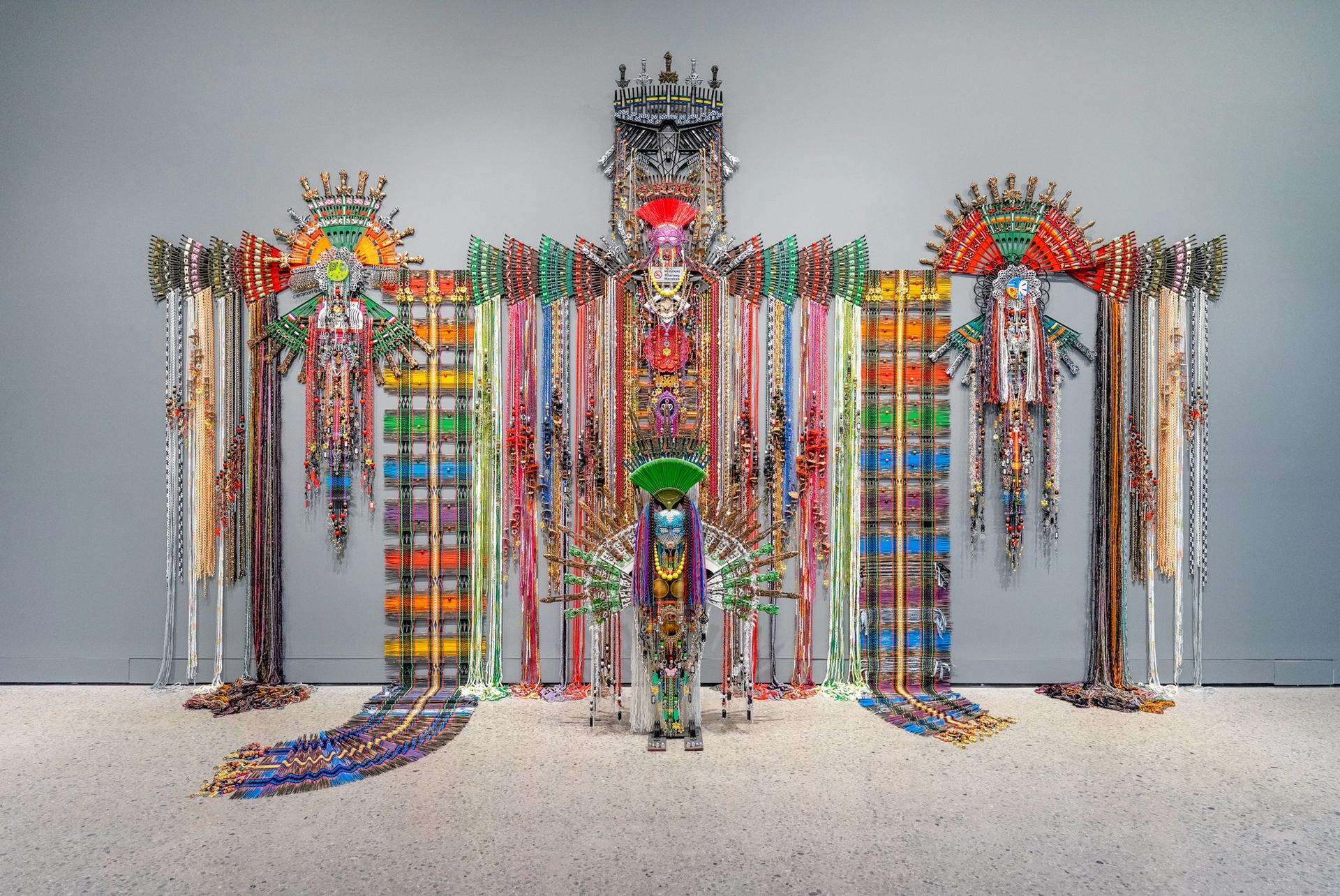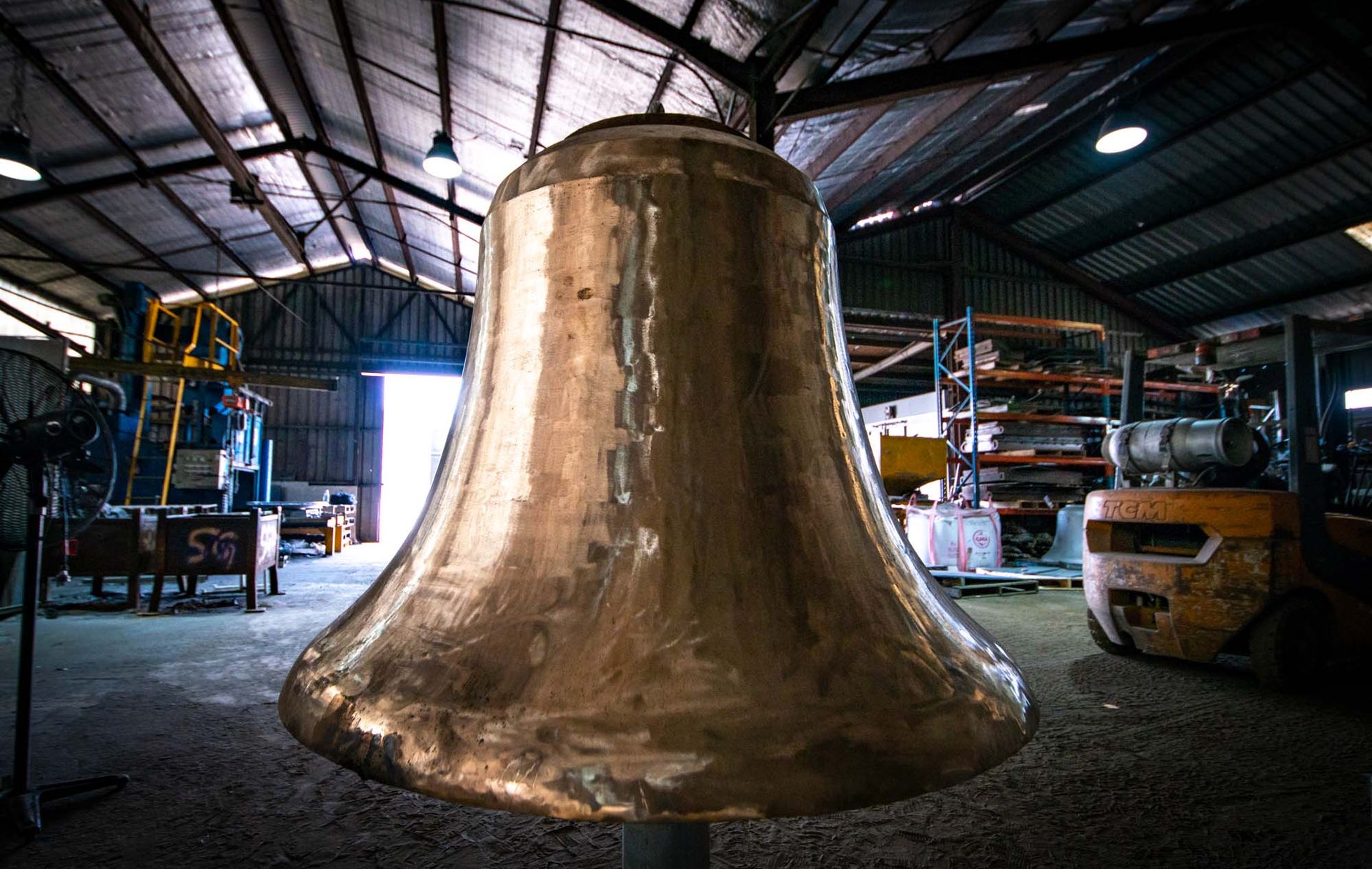In a crowded cultural calendar, three premier Australian art events—the Biennale of Sydney, the Adelaide Biennial of Australian Art and PHOTO 2024, a biannual photography festival—have aligned their openings with the Melbourne Art Fair to create what organisers have dubbed the “Art Grand Tour”.
The multi-city event, which kicks off with the Melbourne Art Fair on 22 February, also encompasses the NGV Triennial, the Tadao Ando-designed MPavilion in Melbourne, Adelaide Festival, and Louise Bourgeois: Has the Day Invaded the Night or Has the Night Invaded the Day? at Art Gallery New South Wales (until 28 April).
Rather than compete for the same audience, “we saw it as a great opportunity for collaboration”, says Rhana Devenport, the director of Art Gallery of South Australia, which presents the Adelaide Biennial. The joint initiative, which Devenport describes as an “intense encounter with contemporary art practice,” also acknowledges what Maree Di Pasquale, chief executive officer of Melbourne Art Fair, sees as a “growing interest among audiences in experiencing art across multiple events and locations”. In response to this interest, organisers have created self-guided itineraries that “highlights the best of contemporary art”, says Di Pasquale.

Anne Samat, Never Walk In Anyone's Shadow (2023)
Photo: Brian Holcombe. Courtesy of the artist and Marc Straus, New York
And it's not just Australians who will undertake the Art Grand Tour. Since 1973, the Biennale of Sydney, the third oldest biennial in the world after Venice and São Paulo, has presented art by more than 1,900 artists from over 100 countries and drawn international audiences to Australia.
Daria de Beauvais, senior curator of Palais de Tokyo, has attended every Biennale of Sydney and Adelaide Biennial since 2018. For her, the three simultaneous events “enable a European curator to delve into the scene”, she says. Importantly, de Beauvais’ visits have often resulted in collaborations between Australian artists and the Palais de Tokyo in Paris. These have included Jonathan Jones: Untitled (Transcriptions of Country) in 2021, a show de Beauvais co-curated that was inspired by French explorer Nicolas Baudin’s expedition to Australia in 1800-03. De Beauvais believes European audiences can learn “about their own colonial history” from Australian artists.
This year Léuli Eshrāghi, curator of Indigenous arts at the Montreal Museum of Fine Arts, will also embark on their own art grand tour. After curating the TarraWarra Biennial in 2023 in regional Victoria, Eshrāghi views Australia’s three biennales as a way to “keep abreast” of local artists’ practices. Australian artists are “invested in working out issues that are elsewhere taken as permanent barriers to connection,” says Eshrāghi. “Europe and North America have a lot to learn from Australian artists and biennials about addressing dark histories.”
José da Silva, curator of the 18th Adelaide Biennial of Australian Art believes international interest in the event stems from its “independent curatorial vision,” and the “visibility of First Nations cultural production in reshaping [the] national art discourse in Australia.”
This year da Silva has programmed 24 Australian artists and poets to explore the idea of Inner Sanctum, those “spaces which allow us to see culture and society differently,” explains da Silva. Highlights include Lawrence English’s Proximities, in which the historic bells of Adelaide will be activated in conversation with a new 712-kg bell commissioned by the artist; and ‘Faith’, a chamber performance of a newly commissioned poem written by 88-year-old Australian poet Kate Llewelyn.

For his work Proximities, artist Lawrence English has reactivated the historic bells of Adelaide
Photo: Diana Domonkos Photography
As audiences prepare to embark on the inaugural Art Grand Tour across Sydney, Melbourne and Adelaide, da Silva emphasises that each event has much to offer. “Like all good biennales”, he says, “they are an invitation to discover something in art, in culture and in cities teaming with life”.


